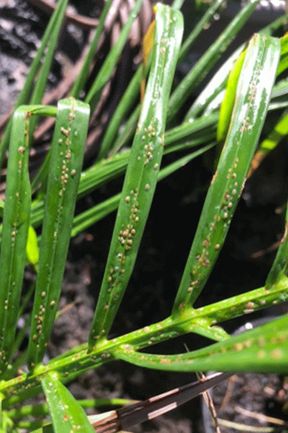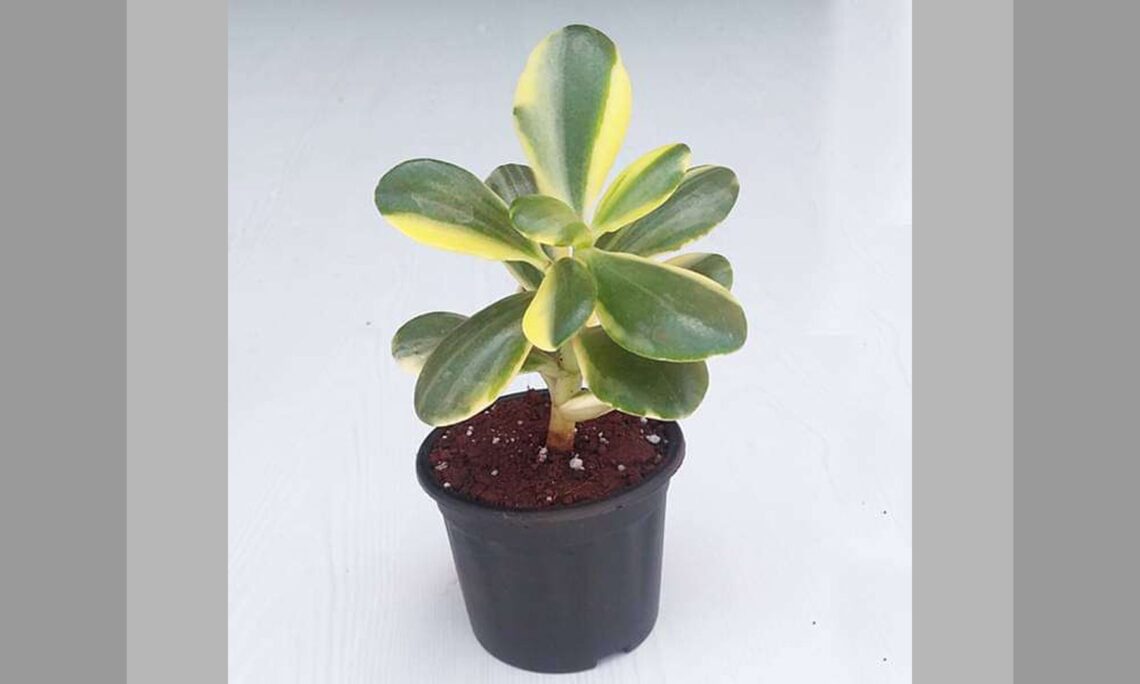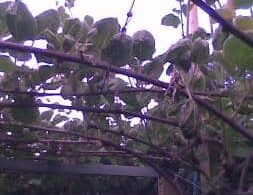Radko Tichavsky is a Czech born Mexican Agrohomeopath. He is a co-founder and director of Instituto Comenius in Mexico and author of Handbook of Agrohomeopathy, 2007 (Spanish) and Homeopathy for Plants, 2009 (Spanish), Organon de la Holohomeopatía and creator and teacher of Holohomeopathy.
He is now offering a one-semester virtual course in Holohomeopathy (in English). You can learn how to define and analyze holons and how to repertorize the specific homeopathic treatment beyond just disease or pest names. You can find out more here: www.icomenius.edu.mx
Many readers asked about Radko Tichavsky’s books. Below is a photo of them. They are available Spanish, Italian and Portuguese. For ordering or information: [email protected]

Editor’s Note: JT (Jenichen/Tichavsky) potency is often mentioned below. It is a centesimal dilution followed by 500 succussions or five hundred continuous turns with a wooden stick to the right and 500 turns to the left (if handling larger volumes). The JT potency frequently has a better reaction in plants and it is very important in preparation of live bionosodes.
Dear Sir,
My 6-year-old guava tree is not giving fruit since last year. Flowering had not happened last year. I live in Gujarat, India. The plains very hot and dry in summer and cold and dry in winter. Summer is milder in the hilly regions and the coast. During summers, the daytime temperature is around 49 °C (120 °F) and at night no lower than 30 °C (86 °F). The monsoon season lasts from June to September. Most of Gujarat receives scanty rainfall.
Thank you
Sanjay
Radko Tichavsky:
Dear Sanjay,
Guava normally takes between 4-5 years to flower, but when its environmental conditions are not optimal, it can delay flowering. For example, the level of humidity (excess moisture can impair the formation of flowers and fruits). Guava generally likes enough sun exposure, and also requires well-drained soil with ideal pH between 6 and 7, even if it can thrive in a pH range between 4.5 to 8.2.
Most of the flowers develop between the second and fourth node of the plant, so before the flowering season, pruning is done to stimulate the production of new buds and flowers.
The important amino acid to induce flowering is Tryptophan, and it can be applied by preparing a mother tincture of Oenothera biennis seeds and Helianthus annuus seeds.
A third part of seeds and 2/3 parts of 30% alcohol is put in a bottle and left to macerate for a week. Then the JT dynamization is made, dissolving 1 part of the tincture in 99 parts of 30% alcohol, performing 500 vigorous succussions at each step.
This is dynamized to potency 3 JT, then 3 dynamizations are made in water (not chlorinated) and applied by spraying in the pre-flowering period. Generally, one application per week is sufficient for three weeks prior to the usual flowering period in the region. In addition, Phosphorus and Kalium phosphoricum at 200 CH potency are also foliarly applied on a single occasion also prior to flowering.
Dear Dr. Tichavsky,
My Crepe Myrtles have bark scale, a sooty moldy looking layer on the bark made by pests similar to aphids. Conventional treatment is to wash the tree and apply a systemic pesticide, but none of the chemicals are bee friendly so I am looking for another option on how to treat. Can you give me any advice on remedies and application?
We live in Ocala, Florida (U.S.) Zipcode 34470. On average, there are 233 sunny days per year in Ocala. Ocala gets some kind of precipitation, on average, 112 days per year.
Summer High: the July high is around 93 degrees
Winter Low: the January low is 43
Rain: averages 52 inches of rain a year
Snow: averages 0 inches of snow a year
Thank you
Nancy
Radko Tichavsky:
Dear Nancy,
Acanthococcus lagerstromiae, is one of the most common pests of crapemyrtles. It overwinters in the egg stage on the trunks.
It is an exotic insect so it has few natural enemies in your holon. Chemical insecticide applications turn the presence of this insect into a chronic condition, since they eliminate both the natural enemies of crapemyrtle aphids which include different species of lady beetles and their larvae (for example Hyperaspis bigeminata, Chilocorus cacti,Ch. stigma, and Harmonia axyridis), green lacewings and their larvae, hover fly maggots, parasitic wasps, (one species of Aphelinidae, Marietta picta, and two species of Encyrtidae, Metaphycus eriococci and Zaomma eriococci) and entomophagous fungi (for example Beauveria bassiana).
One of the factors that can help in prevention is to plant Crepe Myrtles in fairly sunny locations. Sun dehydrates the adults and eggs. A thinning pruning helps to improve sun access to the trunk and inner branches and reduces the vitality of the insect.
As for plant nutrition, the presence of the pest is associated with high nitrogen levels, fertilization with immature compost, animal droppings or industrial nitrogen application and the consequent low potassium level in the plants, all of which worsen infestations.
The most important thing is to control the first annual generation of insects. You can apply on the trunks of the plants a homeopathic remedy of 5 drops of castor oil and 5 drops of mother tincture of Azadirachta indica emulsifying them in a liter of water, then dynamizing this liquid to potency 2 JT.
The first application is made in late autumn and the other early spring. After the first outbreaks, apply a homeopathic remedy composed of 5 drops of castor oil and 5 drops of mother tincture of Boswellia sacra (incense), and 5 drops of Kalium sulphuricum and emulsify it in water and dynamize to potency 2 JT.
This last application can be repeated once a week until the elimination of the eggs that hibernate during the winter in the trunks and branches of the nymphae and adults.
Hello Dr. Tichavsky,
Is there a holistic way to deal with scale on plants? See photo below. We live in Roanoke Virginia in the U.S. (Zip 24108).
Jul Aug Sep Oct Nov Dec
Average high in ºF 87 86 78 69 59 48
Average low in ºF 66 65 58 47 38 30
Av. precipitation in inch 4.04 3.56 3.89 2.89 3.40 2.94

Thank you
Marvin
Radko Tichavsky:
Dear Marvin,
Scale on plants are generally associated with high levels of nitrogen and low levels of potassium and scales prefer these types of plants (with excess nitrogen) as they form soft tissues that are easy to penetrate.
The second consideration relates to the application of allopathic (chemical) preparations that wipe out the natural enemies of the scales (e.g. tiny wasp parasitoids).
In general, it can be said that applications of Calcarea carbonica 6 CH causes a hardening of the epidermis of the plants and hinders infestation, and together with Kalium sulphuricum 6 CH are two preventive remedies.
As for the corrective treatment, foliar application of Helianthus annuus oil emulsion and water with Aloe vera gel prepared at 3 JT potency is used.
Dear Mr. Tichavsky,
I want to take care of my plants & trees using what is around us, as you teach. But, I am not sure exactly what plants in our holon relate to the plants recommended in your answers.
For example, we don’t naturally have aloe vera growing here, but we do have an abundance of prickly pear cactus. Would these be interchangeable? We also don’t have large Oak trees, but we do have Scrub oak. Are those interchanchangable?
We also don’t have the Mediterranean thistle recommended to address the bindweed, but we do have Scotch thistles. Would those be interchangeable?
We also have Tree borers in apple & plum trees. The plum tree have multiple little areas along the trunk where the tree is sapping – the sap crystalizing. I am assuming tree borers?
Details about our holo: We live in Apple Valley, Utah. We are 4,700 feet elevation & we receive about 14 inches of precipitation a year, with quite dry & hot summers. Our temps can easily reach 113 degrees fahrenheit in the hottest part of summer & below freezing in the winter. Our winters temps can be quite variable: one day below freezing and the next can be in the 70’s.
Thank you
D.D. Black
Radko Tichavsky:
Dear D.D. Black,
I am pleased with your question, as it denotes that you are digging into your holon and looking for the meaning of the resources it offers.
The first rule is that in any holon all the resources necessary for its evolution are always present. The second rule is that you cannot establish equivalence of resources from one holon to another, because even two identical plant species located in two different holons will have different impact and functions.
This is mainly due to the presence of different endophytic microorganisms and the fact that the enzymes produced by both plants and organisms in each holon recombine in a phenomenon called “enzymatic promiscuity”, i.e. combinations and interactions of enzymes that depend not only on the origin and characteristics of the enzyme but also on the characteristics of the soil and the fact that the same or similar enzymes can have different functions (not just one) and this number can rise in a single enzyme to double digits.
Despite this incredible variability, certain patterns repeat themselves. For example, Scrub oak (Quercus ilicifolia) will maintain its marked ability to collaborate with ectomycorrhizal fungi (e.g. Glomus spp.). In fact all Quercus sp. do so in any holon.
As for Scotch thistle (Onopordum acanthium) it collaborates with AMF fungi (arbuscular vascular fungi) and Pseudomonas species (including P. putida, P. fluorescens, and P.aeruginosa).
All are microorganisms resistant to heavy metals and especially to lead. This plant is a bioindicator of lead-contaminated soils and is used also for lead bioremediation.
In this sense it is a homeopathic remedy partially similar to Silybum marianum, since both plants show resistance to heavy metals, but each of the plants does so with different metabolisms and collaborating with different microorganisms.
Summarizing, the species are not interchangeable, but if they appear in your holon, then they have a greater significance.
They are the bioindicators of what happens in your holon, and at the same time they are the response of the holon to solve the problems that are bioindicated.
In the case of Quercus ilicifolia as well as in the case of Onopordum acanthium the root system is used to elaborate live nosode or TM according to the needs of the holon.
Dear Sir,
For Thrips in my rose plant and mites, I tried Aranea diadema and Thuja but did not get any result. Can you suggest how to deal with these problems?
Thank you
Abdulsalih
Radko Tichavsky:
Dear Abdusalih,
Araneus diadematus is a homeopathic remedy used for control of flying insects. This European spider does not usually feed on aphids or thrips, and for this reason it is not indicated for their control. It is one of the spiders that weave vertical webs to capture flying insects of medium size only.
As for Thuya occidentalis, the indication for thrips control is correct, but the homeopathic remedy should be made exclusively from the essential oil of this tree and used at low potency between 3-4 JT.
That is to say, it will not be useful to apply the Thuja occidentalis remedy of human homeopathy sold in pharmacies, since it is made from the mother tincture hydroalcoholic and contains very few aromatic essential oils (active principles to combat thrips).
Homeopathic remedies of Thuja occidentalis from human homeopathy made from TM hydroalcoholic, and the advice issued by human homeopaths extrapolating human remedies to agriculture, are usually of anecdotal utility, and are unreliable for the control not only of thrips on Rosa sp. but in general in real conditions of professional agriculture.
You can also use homeopathic remedies made from coccinellid insects (Coccinella sempempunctata, or Harmonia oxyridis for example) made from the MT of adults and remedies prepared from crab spiders, Thomisidae, for example Thomisus onustus. But remember that it is advisable not to repeat a single remedy repeatedly for a long time as they may in this case adversely encourage or attract thrips, commanding the holon concerned to supply it with food (thrips) by applications simulated by homeopathy that mark the presence of their predators.
Dear Mr. Tichavsky,
I’m looking for an homeopathic product to combat Drosophila Suzuki. I found a good one in Germany last year, but, apparently this year the product is no longer available.
Best regards
Lorella Colla
Radko Tichavsky:
Dear Lorella,
Homeopathic remedies in plants are specific to the plants on which they are applied. I know that there are companies that produce the so-called homeopathic preparations and indicate them in the fight against pathogens, but homeopathy applied within the allopathic philosophy, ie creating binomial pathogen-homeopathic remedies, inevitably leads to palliation and perpetuation of the problem chronically.
It would be similar to establishing automatic binomials such as Aconitum napellus-fever, Ruta graveolens-sprain, Nux vomica- upset stomach, regardless of the characteristics and symptomatology of the patient.
As in true human or veterinary homeopathy, in holohomeopathy it is necessary to take into account the patient, in our case the holon, the species of the plant and the symptomatology.
In general, it can be said that Drosophila suzuki is due to the excess of nitrogen in the plant nutrition and spray foliar irrigation, in addition to the susceptibility of some species and varieties.
Of course, the remedy will vary if the Drosophyla suzuki is present in tomato, or if it is present in lettuce, only being quite specific in the repertorization to solve the underlying disease and consequently the insect (symptom) disappears.
But in the case of applying homeopathic remedies allopathically, the insect disappears, but the disease does not, and consequently the insect disappears shortly but it comes back and will be stronger and stronger until it becomes a chronic problem.
Some generalist predators can take advantage of D. suzukii as a food resource, but so far systematic predation has been confirmed only on the anthocorid Orius laevigatus and the earwig Labidura riparia, from which we prepare mother tincture and homeopathic preparations at low potency 6 JT.
We also use homeopathic preparations of three parasitoids of D. suzukii: Pachycrepoideus vindemmiae, Trichopria drosophilae and Leptopilina heterotoma. Their application attracts these parasitoid wasps to the orchard and clusters of other generalist insects who do the job of liminating Drosophyla suzukii in what we call systemic holon reaction.
We also use Coccinella septempunctata, Harmonia axyridis and Chrysoperla carnea (these can be captured in your garden by leaving a light bulb on during the night). With a few specimens you can prepare your mother tincture and dynamizations between 3-4 JT to repel and eliminate D. suzuki in a holohomeopathic way.






